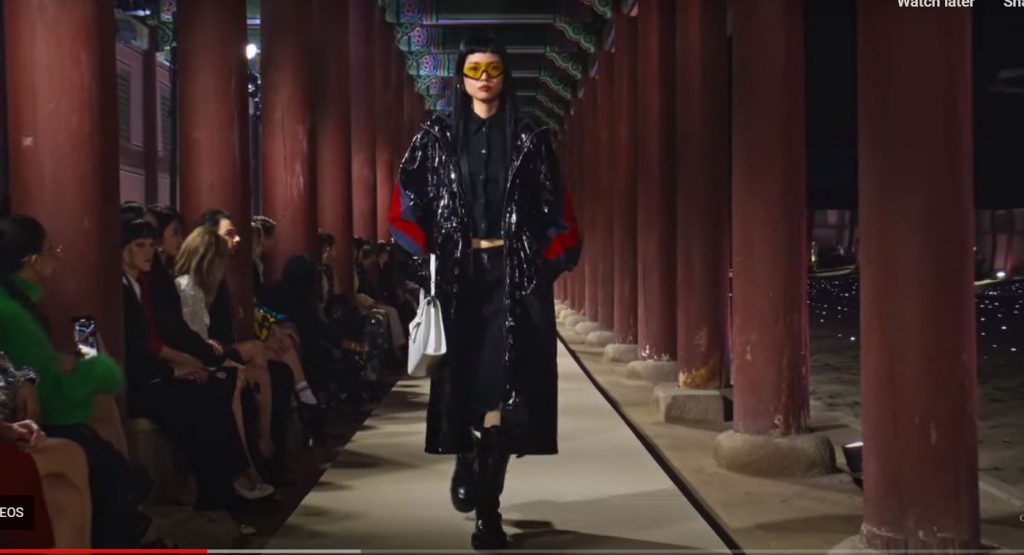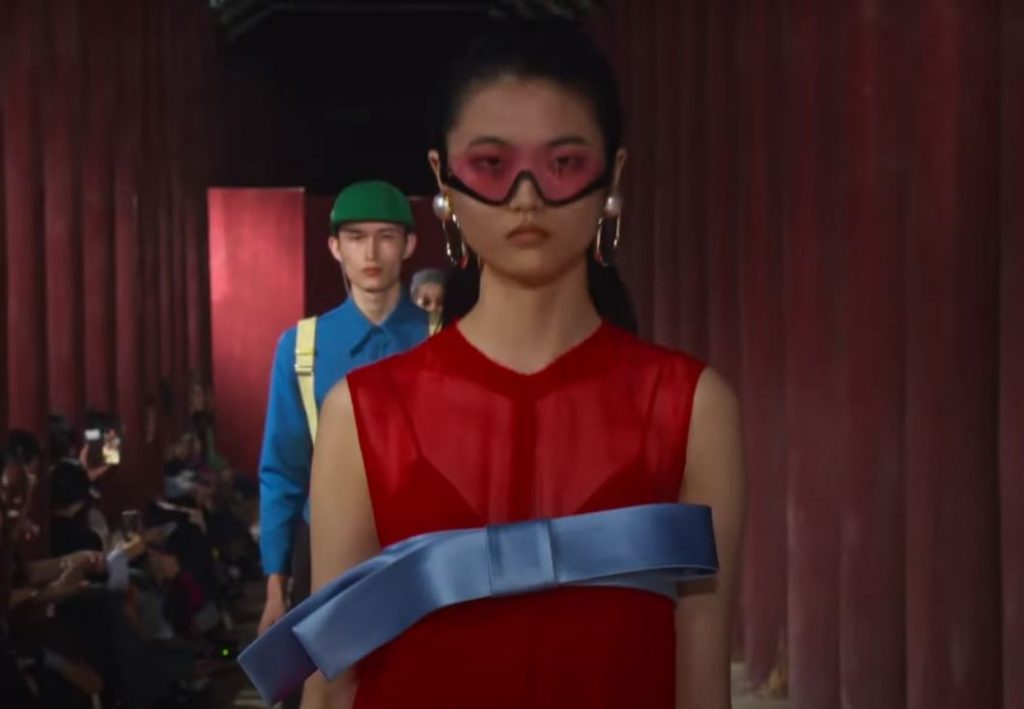Between one designer’s departure and another’s arrival, Gucci hit a rich futuristic vein in Seoul.

Creative Designer Alessandro Michel’s departure from Gucci last November has left a hole at Gucci that won’t be properly filled until Sabato de Sarno takes over for Spring ’24.
In the interim was an Autumn/Winter ’23 collection that had all the trappings of summary of precedent eras in lieu of grand new ones. And on 17th May the Resort/Cruise Collection.
Cruise Collections are a Great Addition to the Style Calendar
They’ve proved to be so much more than an extra money spinner in the post seasonal calendar for all brands. If LV and Chanel’s shows are anything to go by, they’re a hotbed for youthful experimentalism away from home.
But would Gucci – flailing slightly in the sales departmen and temporarily without a leader at the helm – take another odd turn?

Yes, and for the better!
So much so that in time Michel’s stint – a polemical, stark anti-fashion odyssey – may be seen as an interim period itself.
Without Michel – Youtfulness and Color
At Gyeongbokgung Palace in South Korea on 17th May, the creative team in situ were intent on investing Michel’s bare bones with life anew.
This was Gucci engaging with and utilizing culture (youth, sports, Korean and wider Asian), a tactic that Michele had become increasingly resistant to in his singular vision.
And that cojoining of Korean/Asian iconography and Western ideals is also explored in ways that, while not always new, points to more fascinating possibilities, and sometimes starts a fire.

A Merging of Asian and Western Ideals that Pointed Somewhere New
At the standard level, space age anime fantasies (or even an Aja motif) reappeared through the show. Arguably cultural appropriation, but both the South Korean streetwear scene and Gucci’s anti-fashion stance are at odds with traditional formal fashion ideals, so the merging of the two made sense.
… But Not Going Too Far
OK, so playing music from hit Korean shows like Squid Game and Parasite is a bit rich – these shows and other Korean exports have a strong element of social commentary that critiques class capitalism and that Gucci, no matter how radical its designs are, will never appropriate.
But rarely has a collection in recent memory produced so many individual highlights, so few repetitions, such a focused whole.
This kind of stylistic radicalism convinces people that – in Gucci or otherwise and like the kids they’re emulating – you can have a go yourself.

Wet Suits, Metal Belts and Video Games
Some of it was even funny – a model in Gucci wetsuit (probably not biodegradable but nobody’s perfect) draped in a pink tasseled dress that looked like she was being attacked by a literal giant mollusk.
Elsewhere, if there weren’t labels to spell it out, Gucci interlocking metal belts and chokers were novel confirmations of the brand.
And video games continue to be an overwhelming influence. Those boys in square suits look like Roblox characters, and the experimental bags-cum-skateboards were like landing gear from Fortnite – another concept that stands apart, appeals to the young, and makes millions.
